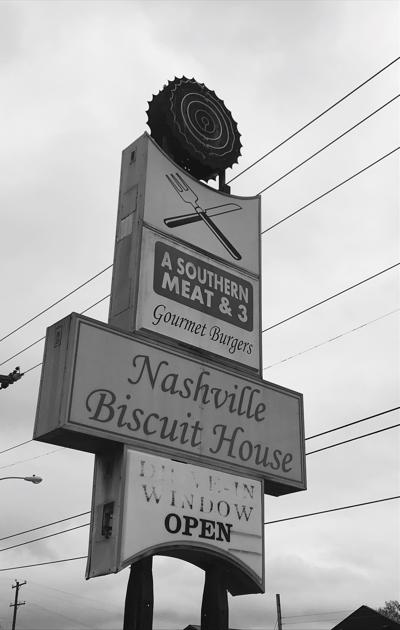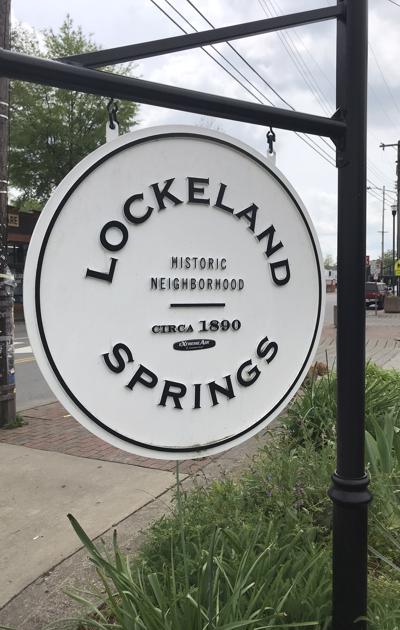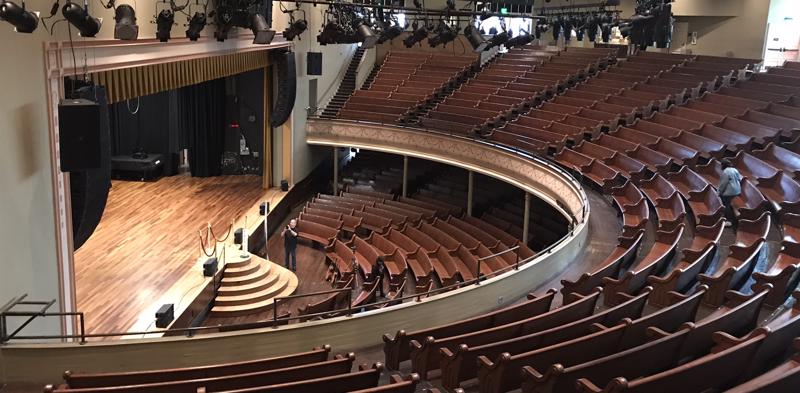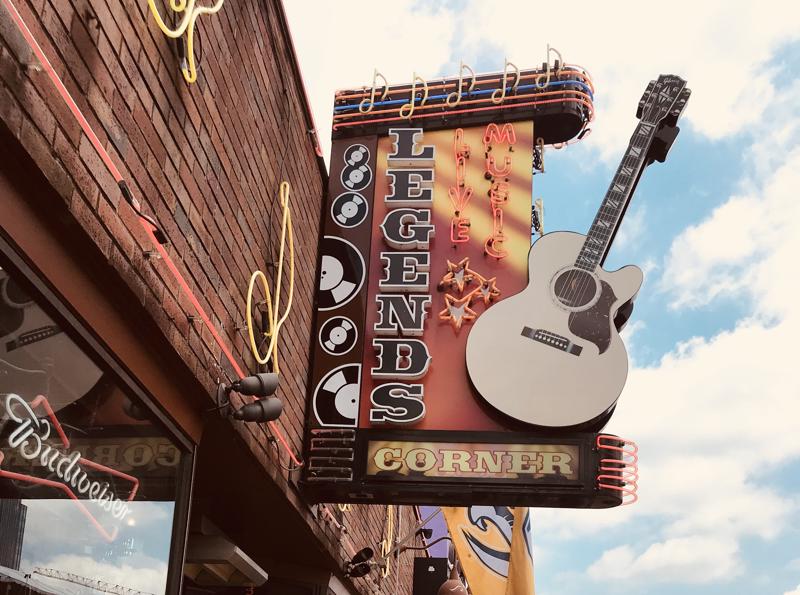2018 Adventures
Well sadly today was our last day in Nashville. We started out our day with the most important part of the day I hear.. Breakfast! Give me a ye-haw for southern styled breakfasts!
There is a cute little place in East Nashville called The Nashville Biscuit House. It has southern homestyle cooking for breakfast and lunch, voted the best breakfast in Nashville. Some of the best biscuit and sausage gravy I have every had. It is not uncommon for it to be lined up out the door and around the building. Luckily for us we went at 10-10:30 and we were just in-between the large line-ups. As soon
brenda stanger
104 chapters
16 Apr 2020
Tennesse - Nashville
Nashville - Day 4
Well sadly today was our last day in Nashville. We started out our day with the most important part of the day I hear.. Breakfast! Give me a ye-haw for southern styled breakfasts!
There is a cute little place in East Nashville called The Nashville Biscuit House. It has southern homestyle cooking for breakfast and lunch, voted the best breakfast in Nashville. Some of the best biscuit and sausage gravy I have every had. It is not uncommon for it to be lined up out the door and around the building. Luckily for us we went at 10-10:30 and we were just in-between the large line-ups. As soon


as one table left, more people came and filled the place again.
A must for anyone visiting Nashville.
After breakfast we headed downtown to go visit the Ryman Theatre. The Ryman theatre is where the Grand Ole Opry ran for many years before it moved to a larger location east of downtown.
But a bit of history first..
The Ryman originally opened up as the Union Gospel Tabernacle in 1892. It's construction was spearheaded by Thomas Ryman (1843–1904), a Nashville businessman who owned several saloons and a fleet of riverboats. Ryman conceived of the auditorium as a tabernacle for the influential revivalist Samuel Porter Jones. Ryman had attended one of Jones' 1885 tent revivals with the intent to heckle, but was instead converted into a devout Christian, and soon after pledged to build the tabernacle so the people of Nashville could attend a large-scale revival indoors. It took seven years to complete and cost US$100,000 (equivalent to $2,723,704 in 2017).
Withe the lengthy time and cost to build, Jones ended up holding his first revival at the site on May 25, 1890, with only the building's foundation and six-foot (1.8 m) walls standing. Exceeding its construction budget, the tabernacle opened US$20,000 (equivalent to $544,741 in 2017) in debt. Jones sought to name the tabernacle in Ryman's honor, but Ryman denied the request several times. When Ryman died in 1904, his memorial service was held at the tabernacle. During the service, Jones proposed the building be renamed Ryman Auditorium, which was met with the overwhelming approval of the attendees.
The building was originally designed to contain a balcony, but a lack of funds delayed its completion. The balcony was eventually built and opened in time for the 1897 gathering of the United Confederate Veterans, with funds provided by members of the group. As such, the balcony was named the Confederate Gallery. Upon the completion of the balcony, the Ryman's capacity rose to 6,000. A stage was added in 1901 that reduced the capacity to just over 3,000.
Though the building was designed to be a house of worship, a purpose it continued to serve throughout most of its early existence, it was often leased to promoters for non-religious events in an effort to pay off its debts and remain open. In 1904, Lula C. Naff, a widow and mother who was working as a stenographer, began to book and promote speaking engagements, concerts, boxing matches, and other attractions at the Ryman in her free time. In 1914, when her employer went out of business, Naff made booking these events her full-time job. She eventually transitioned into a role as the Ryman's official manager by 1920.
The Grand Ole Opry was first broadcasted from the Ryman on June 5, 1943, and originated there every week for nearly 31 years thereafter. Every show sold out, and hundreds were often turned away.
During its tenure at Ryman Auditorium, the Opry hosted the biggest country music stars of the day, and the show became known around the world. In addition to its home on WSM, portions of the show (at various times throughout its history) were also broadcast on network radio and television to a wider audience. Melding its then-current usage with the building's origins as a house of worship, the Ryman earned the nickname "The Mother Church of Country Music", which it still holds to this day.
As part of the tour we visited the backstage and a number of dressing rooms for the artists when they come to play. When the new home was built for the Grand Ole Opry the designers took a part of the original stage from the Ryman theatre and created a "circle" to place within the new stage to "keep the circle unbroken".
Nashville has such an amazing history and is filled with such talent. From its very beginnings, Nashville grew from a foundation built on music. Music has been the common thread connecting the life and soul of the city and its people. Visitors have ventured here to experience the music that weaves such a fundamental pattern in its cultural, business and social fabric. Nashville’s connection to music is unequaled, and its reputation as Music City has been consistently proven for over 200 years. What a amazing place to visit! Nashville, we will be back again one day.







1.
Year of Travel
2.
Sosua - Dominican Republic
3.
Our Adventures So Far...
4.
Beach Life
5.
Our Favourite Restaurants in Sosua
6.
Fun with Friends
7.
Sosua Continued
8.
Sun, Surf and Sand
9.
Samana Peninsula
10.
Sosua Highlights
11.
USA Road Trip
12.
Texas
13.
Texas
14.
Louisiana - NOLA
15.
Louisiana - NOLA
16.
Louisiana - NOLA
17.
Alabama
18.
Alabama to Tennesse
19.
Tennesse - Nashville
20.
Tennesse - Nashville
21.
Tennesse - Nashville
22.
Tennesse - Memphis
23.
Tennesse - Memphis
24.
Tennesse - Memphis
25.
Summer at Home
26.
Westcoast Adventures
27.
Europe
28.
Europe - Budapest
29.
Europe - Budapest
30.
Europe - Vienna
31.
Europe - Vienna
32.
Europe - Vienna
33.
Europe - Prague
34.
Europe - Prague
35.
Europe - Prague
36.
Europe - Berlin
37.
Europe - Berlin
38.
Europe - Berlin
39.
Europe - Salzburg
40.
Europe - Salzburg
41.
Europe - Salzburg
42.
Europe - Salzburg
43.
Europe - Salzburg
44.
Europe - Innsbruck
45.
Europe - Innsbruck
46.
Europe - Bad Ragaz
47.
Europe - Bad Ragaz
48.
Europe - Lindau
49.
Europe - Lindau
50.
Europe - Fussen
51.
Europe - Fussen
52.
Europe - Freising and Munich
53.
San Francisco
54.
San Francisco
55.
San Francisco
56.
San Francisco
57.
San Francisco
58.
San Francisco
59.
Canada Road Trip
60.
On the Road to Ontario
61.
Ontario - Thunderbay
62.
Ontario - Thunderbay
63.
Ontario - Thunderbay
64.
Ontario - Toronto
65.
Ontario - Ottawa
66.
Ontario - Ottawa
67.
Quebec - Montreal
68.
Quebec - Montreal
69.
Quebec - Montreal
70.
Quebec - Quebec City
71.
Quebec - Quebec City
72.
Quebec - Sainte Flavie
73.
New Brunswick - Bathurst
74.
New Brunswick - Shediac
75.
New Brunswick - Shediac
76.
Prince Edward Island - Charlottetown
77.
Prince Edward Island - Road trip
78.
Prince Edward Island - Charlottetown
79.
Prince Edward Island - More exploration
80.
Nova Scotia - Halifax
81.
Nova Scotia - Halifax
82.
Nova Scotia - Halifax
83.
Nova Scotia - Sydney
84.
Newfoundland - Channel-Port
85.
Newfoundland - Rocky Harbour
86.
Newfoundland - Rocky Harbour
87.
Newfoundland - St. John's
88.
Newfoundland - St. John's
89.
Newfoundland - St. John's
90.
Newfoundland - St. John's
91.
Newfoundland - St. John's
92.
Newfoundland - Travelling
93.
Nova Scotia - Sydney
94.
New Brunswick - Saint John
95.
Maine - Portland
96.
Massachessets - Cape Cod via Boston
97.
Massachusetts - Cape Cod
98.
Massachusetts - Cape Cod
99.
Pennsylvania - Clearfield
100.
Illinois - Chicago
101.
Illinois - Chicago
102.
Illinois - Chicago
103.
Heading Home
104.
Our Year at a Glance
Share your travel adventures like this!
Create your own travel blog in one step
Share with friends and family to follow your journey
Easy set up, no technical knowledge needed and unlimited storage!
© 2025 Travel Diaries. All rights reserved.